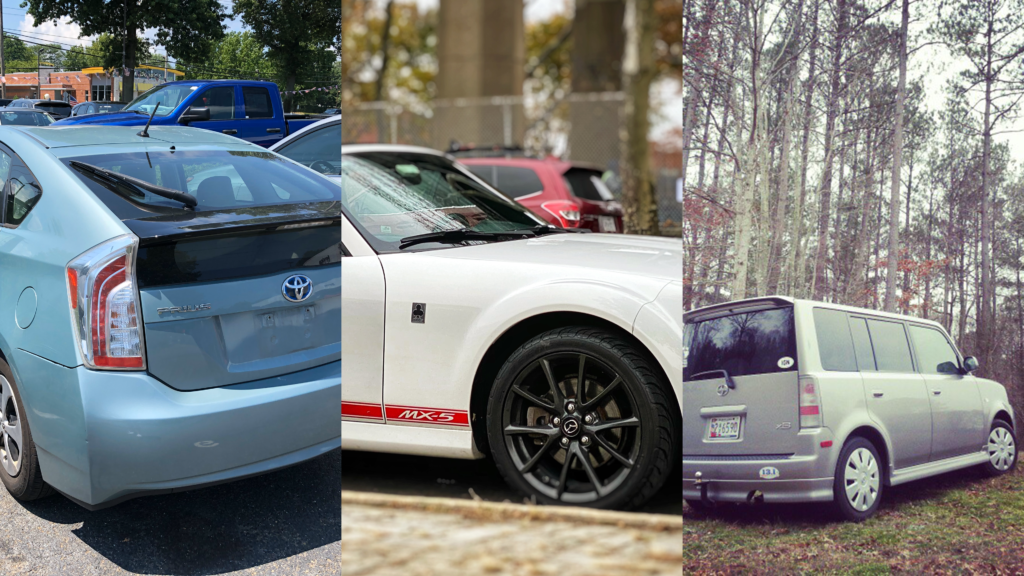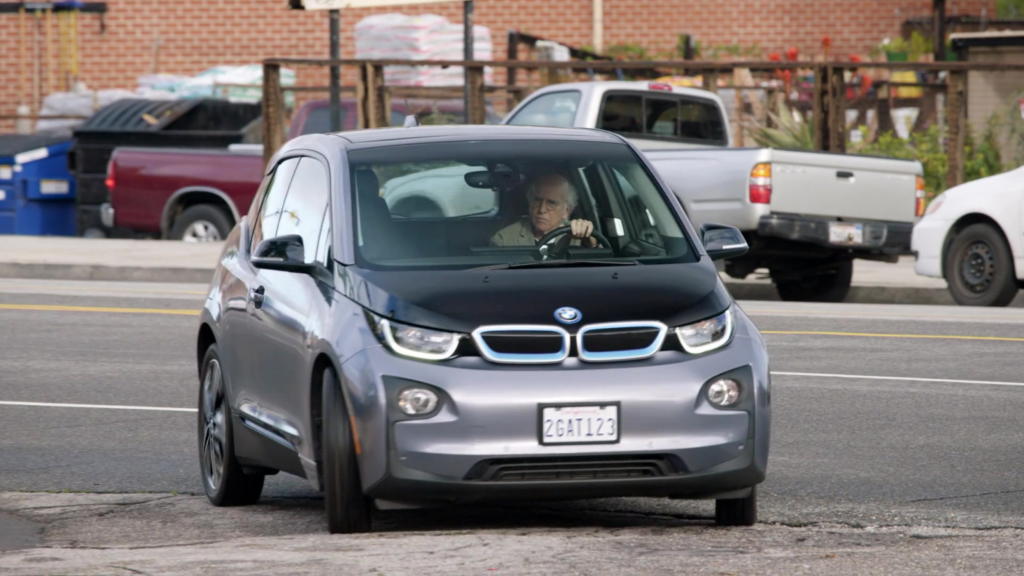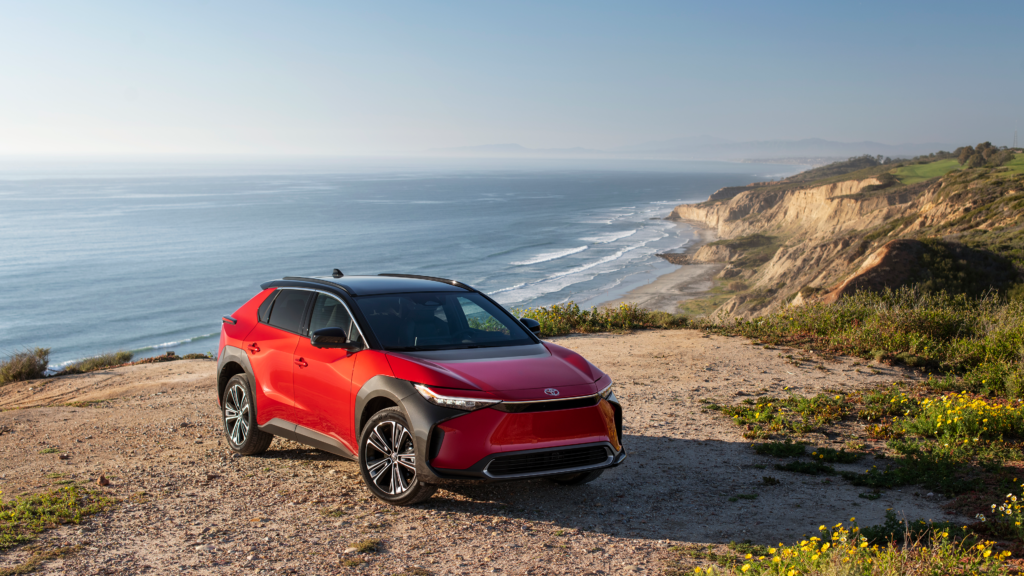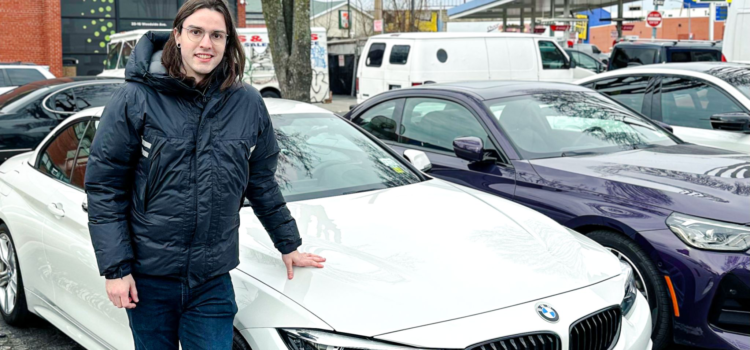Interview with Mag-X: An up-and-coming auto writer talks about… the automotive life of Generation Z
For event updates, you can follow NYCars & Coffee on Instagram, join the Facebook group, or check out the official website. If you’re looking for an auto show in New York City, our weekly meetups could scratch that itch. In the meantime, learn about our mission at Acceleramota.
The following interview was conducted by journalist Daisuke Sasano in February 2023. A localized translation was then published in the March issue of Japanese car magazine Mag-X. As of this writing, the print edition can still be purchased from Amazon Japan.
The following text was translated from a Japanese translation of an exchange that originally took place in English. I could not have managed to pull this off without the help of my wife, Victoria Song.
There aren’t many car clubs in New York City, but one called NYCars & Coffee was founded last October. The organizer, Gabe Carey, is a Gen Z American and an emerging automotive writer. Gabe will likely be a driving force for today’s young Americans. He has deep, interesting thoughts and it’s easy to understand how young Americans think when you speak to him.
For this monthly report, we’ll focus on an interview with Gabe.
[Editor’s note: Because this interview is almost two months old, I’ve added a few parenthetical asides, clearly labeled as such like this one, to account for statements or predictions I made that are now outdated.]
My car history

Sasano: How many cars have you owned? Tell me the names of the cars.
Gabe: Believe it or not, just four so far. But I’m 26, so there’s plenty of time!
Sasano: That’s true! (Laughs)
Gabe: My first car was a 2006 Scion xB with about 110,000 miles at the time of purchase. Most of the popular kids I went to high school with drove lifted pickup trucks and American muscle cars. Me being the rebel I was, I made the complete opposite choice. Sadly, I totaled the Scion back in 2016, about seven years ago now. My second car was a 2012 Prius. I guess I had an affinity for Toyota. (Laughs)
[Author’s note: Gabe currently lives in New York City but his hometown is in Maryland. It was one of the original 13 colonies to become independent from Great Britain, and is a region with a lot of nature including mountains and a coastline.]
As I entered my mid-20s, I wanted something a little sportier – a convertible! – but I was also on a tight budget. Naturally, I bought a Mazda MX-5. A 2013 Miata Club. Here in the United States, some people call the NC Miata (that is, any Miata built from 2005 to 2015) a boat since it was, and still is, the heaviest generation of MX-5. The Miata is a fun toy, but far from practical, especially in NYC, where owning one car is a luxury, nevermind two. It didn’t take long after I bought the Miata for my wife to start complaining about the lack of cabin and trunk space. We take a lot of road trips and needed more room to fit our luggage and sometimes the pets. Don’t even get me started on groceries!
Sasano: A lot of times in Japan, there’s a lot of times when wives decide which car to buy. What’s your current car?

Gabe: Now I drive a 2018 BMW 430i. It’s unique for a 4 Series, though, for a few reasons. First, it has the M Sport package, so it’s decked out with red leather seats and tasteful red and blue colorway accents peppered throughout. It also has a Steptronic, or manumatic, transmission with paddle shifters for manual gear shifting, as well as sport suspension.
Best of all, I didn’t have to sacrifice the retractable roof since it’s a hardtop convertible – one of the last of its kind from BMW. The only change I’ve made so far was swapping out the stock brakes for the M Performance kit, bright red Brembo calipers and all.
[Editor’s note: In March, I also added a DME performance tune, for what it’s worth.]
An auto show in New York City every week
S: What would you like to do in the future with NYCars & Coffee?
G: Well, in a perfect world, it would be my full-time job! (Laughs) The short-term answer is continuing to grow our attendance each week, attracting more types of vehicles, and exploring respectable ways to make money. Eventually, that could mean another auto show in New York, but right now I’m in talks with a few local businesses as potential sponsors. Our first Instagram Reel had over 11,000 views so there’s a ripe opportunity for some kind of brand collaboration. I want to maintain a relaxed, casual environment while also maintaining a roof over my head.

S: You said you made NYC Cars and Coffee because there weren’t a ton of other clubs. Was there any other reason or motivation?
Ultimately, I want to give New York car folks a place where they can set brand allegiance aside and come together to celebrate the positive aspects of car culture. Like a laid-back auto show in New York where even the car-curious can congregate every Sunday with diehards eager to share their expertise, no gatekeeping allowed. We still have a long way to go before everyone is comfortable attending automotive enthusiast meetups like mine, no matter how much they love cars. But everyone is welcome at NYCars & Coffee, regardless of gender, race, sexual orientation, and experience level.
The hope is that, by establishing those values early on, we attract mature open-minded people with all sorts of cars, from vintage classics to JDM to the 2023 Rivian R1T.
[Author’s note: There are many so-called “Cars and Coffee” groups currently popping up across America.]
The reality of range anxiety
S: Do you have any plans to buy an electric vehicle? If not, please tell me the reason.
G: Yes, absolutely! I’m reviewing the 2024 Polestar 2 soon, which would probably be my electric vehicle (BEV) of choice right now if I were to buy one.
[Editor’s note: I was supposed to review the Polestar 2, but sadly I didn’t have the chance to submit the paperwork for the loaner before I was laid off from the publication letting me review it. I did, however, test drive the 2023 model and I was impressed!
That said, I’m not sure I’m ready to fully commit to an all-electric powertrain just yet. Plug-in hybrids (PHEVs) are a great alternative for now, at least until our charging infrastructure gets better. “Range anxiety” is real.
[Editor’s note: I’ve since backpedaled on this position. PHEVs are a necessary, albeit disposable stopgap solution to a temporary problem. Based on how fast the infrastructure is developing, I suspect range and charge times will be less of a concern by the time I invest in another car.]
Unlike many other developed nations around the world, Americans are dependent on cars for long-distance travel, whether they’re visiting friends and family or traveling to other states. We killed trains in the US when the car was introduced. Rather than providing more options, we cut funding for public transit altogether in favor of more expensive passenger vehicles, and now we’re suffering the consequences. I believe there’s a place for both methods of transportation, not just one or the other.

S: Can you give an example?
G: My parents live more than 230 miles away (about 370 km). For the base model Ioniq 5, for example, Hyundai recommends Level 2 charging after an estimated 220 miles, which can take about 6 hours to complete. That’s 10.5 hours for a trip that would take about six hours less in a gas-powered car. We need fast charging to be more widely available and less taxing on the batteries before I’m comfortable going fully electric.
[Editor’s note: With Tesla is opening up its Supercharger network to other makes, a BMW spokesperson told me last week that the number of fast chargers available for non-Tesla EVs has jumped more than 60% since this interview took place. And you can probably skip this next paragraph. My Tonale reservation was non-committal. Thankfully, I never put down any cash.]
S: What’s the car you’re currently thinking of?
G: I’ve pre-ordered an Alfa Romeo Tonale, the first “electrified” vehicle from the Italian automaker (it’s a plug-in hybrid) my wife and I plan on using as a second car for longer road trips. The Tonale will give us more space for luggage and help us save money on gas, for the most part without completely sacrificing the fun factor of a sports coupe or a roadster. Plus, the planet could benefit from lower emissions coming from me. (Laughs)
[Editor’s note: Thankfully, I never put down any cash on the Tonale. Probably not going through with that now.]
Fueling the future: electric vs hydrogen
S: Japanese automakers, especially Toyota seem far behind the curve in adopting EVs. Let me know your opinion.
G: In the US, there’s a TV comedy series called Curb Your Enthusiasm. I don’t think it’s popular in Japan, but the main character – Larry – famously drove a Prius for eight seasons straight. In the ninth season, which aired in late 2017, he switched to a BMW i3 compact hatchback. Of course, I’m sure it’s a paid placement, but I still feel it speaks to Toyota’s waning relevance in this space.

For years I said, “The day Toyota launches an electric car is the day electric cars become viable for most people.” Toyota makes affordable, reliable vehicles, right?
But Toyota entered the market too late. The bZ4X, Toyota’s first all-electric production vehicle, only sold something like 260 units before it was recalled because the wheels were falling off. That sounds like a punchline at the end of a bad joke, but it happened. Pending a shift in focus from its new president, Koji Sato, Toyota is betting on hydrogen and plug-in hybrids.
[Editor’s note: You know, I wasn’t expecting this section to age well and yet…]
S: Do you think hydrogen cars will be accepted in the US?
G: I understand where Toyota is coming from with hydrogen, I do. Hydrogen vehicles don’t use as much of our global lithium supply, they are faster to refuel, and they require very little maintenance. They’re also a hard sell to consumers more concerned about the impact of fossil fuels on their wallets than the climate, which unfortunately accounts for a lot of Americans. Hydrogen fuel costs about the same amount at the pump as gasoline – and in some cases can be even more expensive.
[Author’s note: Generally, in America, it’s cheaper to maintain EVs than gasoline vehicles and so the shift from gasoline to electric will be more affordable. Because of that, the price of hydrogen will be an important factor.]

That said, not every Japanese company is failing to adopt EVs, however. Remember, the Nissan Leaf was one of the first. Although it’s not going to win any awards for its speed, the Leaf has been around for more than a decade. Sony and Honda are also doing some interesting things with the Afeela. While Toyota seems to be juggling more than it can handle, Honda is releasing the all-electric Prologue this year and Acura is giving birth to a whole family of EVs. At the same time, Honda is collaborating with General Motors to build a brand-new hydrogen fuel cell system from the ground up. I only hope the delay is a result of Honda’s perfectionism and not its stubbornness. Perhaps we’ll see at the international auto show in New York.
Magazine-X has printed 50,000 copies each month in Japan. As you are an automotive writer, can I have a message for Japanese readers and Japanese automakers?
Embrace change. But at the same time, please don’t stop making affordable sports cars.
NYCars & Coffee is an NYC car meet always held within the five boroughs. For those unfamiliar with cars and coffee, ours is something like an auto show in New York. Each week, we gather in a parking lot – yes, to admire everyone’s rides, but more so to get out and meet likeminded members of our local communities. See the NYCars & Coffee website or follow @nycarsxcoffee on Instagram for more details.

